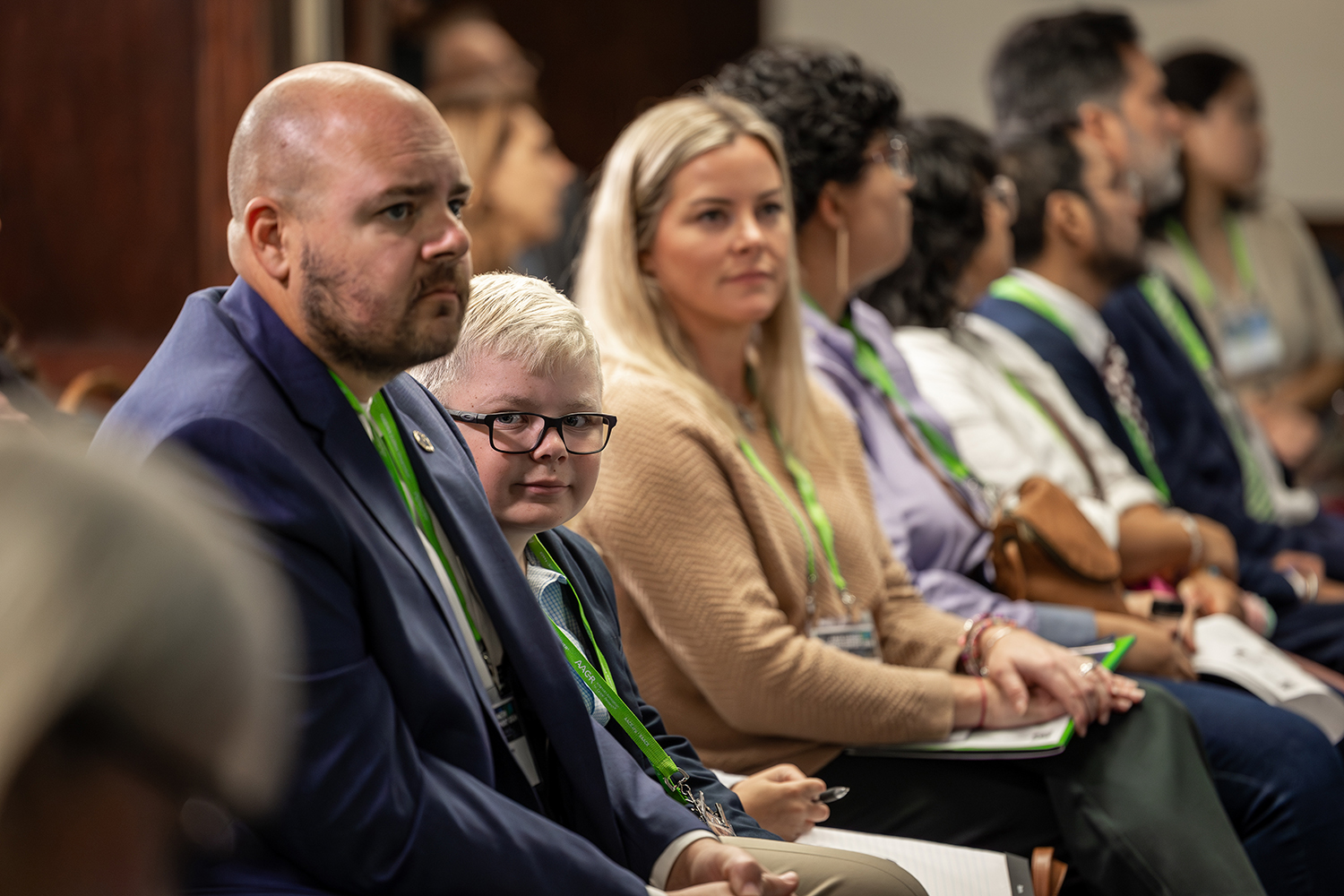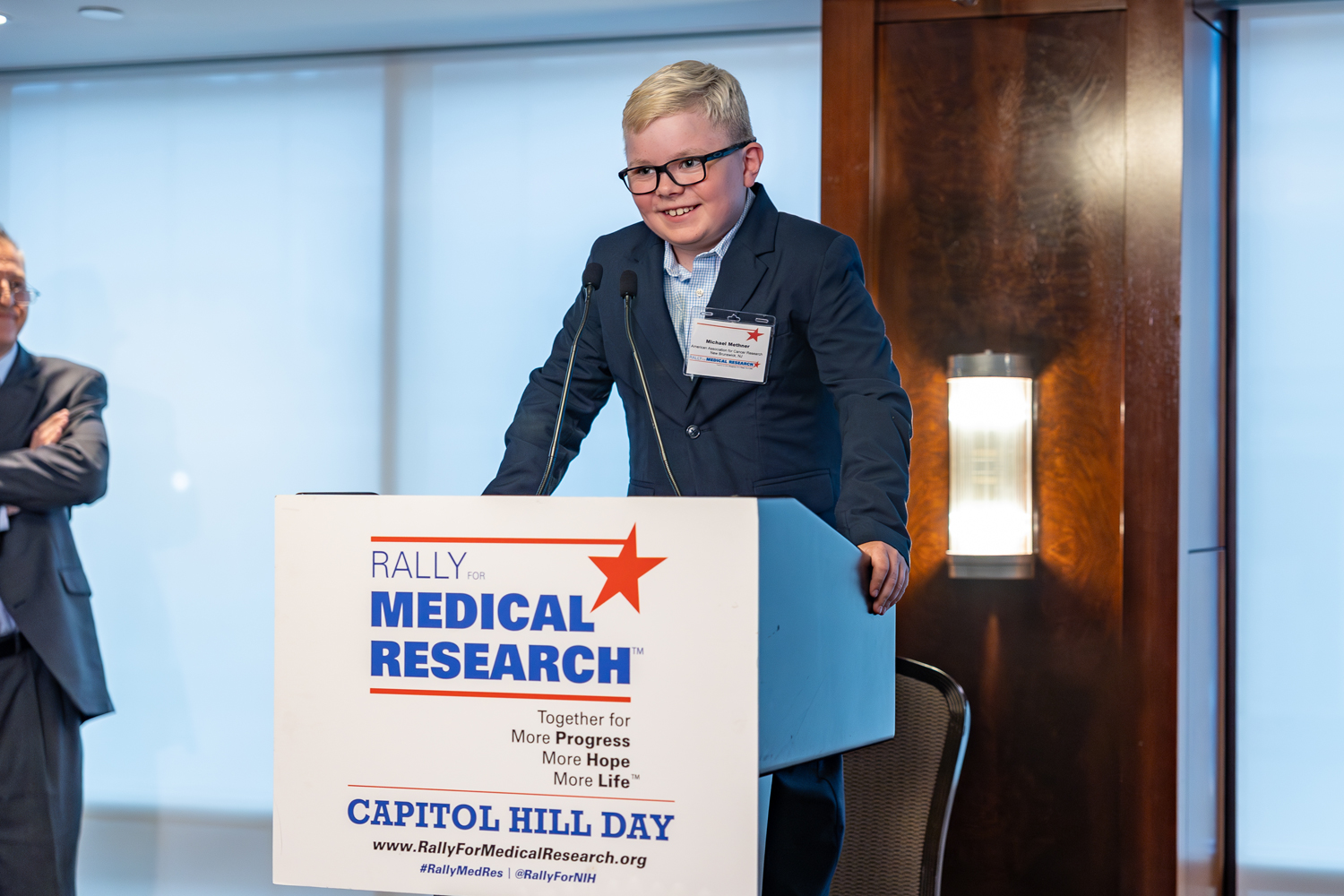Editor’s Note: This story, written by Neha J. Pancholi, PhD, first appeared on Cancer Research Catalyst, the official blog of the American Association for Cancer Research (AACR). The AACR also publishes Cancer Today. You can read this and other stories on the AACR website.
MIKE METHNER, A POLICE OFFICER in East Brunswick, New Jersey, had just finished field sobriety training to spot signs of drunk driving.
It was shocking, then, when he came home and noticed one of those signs—an involuntary eye movement known as nystagmus—in his 2.5-year-old son, Michael.
“I had literally just learned that nystagmus could be a sign of intoxication or brain injury,” he recalled. He showed it to his wife, Emily, a nurse, who jumped on calling Michael’s pediatrician. A series of doctors’ appointments led to a specialist who ultimately delivered the bad news:
Michael had brain cancer.
“When we saw the size and location of the tumor and realized that it might kill him, we were completely devastated,” said Emily.
But eight years later, Michael is a thriving 10-year-old, something he and his parents attribute to a new targeted therapy and the medical research that led to its development. His story was featured in this year’s AACR Cancer Progress Report, unveiled September 18 with a congressional briefing in Washington, D.C.
The report, now in its 14th edition, “is a cornerstone of AACR’s [American Association for Cancer Research] efforts to increase public understanding of the benefits of medical research while also advocating for increased funding from the federal government to fuel and accelerate progress against cancer,” said AACR Chief Executive Officer Margaret Foti, PhD, MD (hc), in remarks at the congressional briefing.
“The progress discussed in the report is clear evidence that finding cures for cancer and helping patients is an attainable goal,” added AACR President Patricia M. LoRusso, DO, PhD (hc), FAACR, “but it will take commitment by cancer researchers, the government, and the community to invest in cancer research.”
Illustrating the power of medical research were the four cancer survivors in attendance, living testaments to the immense leaps cancer treatment has made in recent years. Among them was Michael, who, along with his parents and sister, Lillian, traveled to Washington, D.C. to share his story and advocate for increased medical funding.
The Impact of Medical Research
When Michael was first diagnosed, his family explained, the standard of care for his cancer, optic nerve glioma, was still chemotherapy. So, every Monday for four years, Michael received toxic platinum-containing chemotherapy through a port in his chest and suffered the debilitating nausea and nerve pain that came with it.
“Intravenous chemotherapy for a 2.5-year-old is unbearable,” his father, Mike, said, adding that while the treatment didn’t shrink the tumor, it did keep it at bay for a few years.
After chemotherapy stopped working, Michael switched to a targeted therapy called bevacizumab (Avastin), but that led to kidney failure and brought him scarily close to a stroke. He then moved on to trametinib (Mekinist), which halted the tumor’s growth, but like the other treatments he had tried, didn’t shrink it and came with its own set of harsh side effects.

Ten-year-old Michael Methner, shown here with parents Mike and Emily, participated in a congressional briefing for the AACR Cancer Progress Report. Photo courtesy of the AACR
Eventually, an experimental targeted therapy, tovorafenib, became available to Michael as part of a clinical trial. Tovorafenib is designed to block the tumor-promoting activity of mutant RAF proteins, and since Michael’s tumor had one of the RAF mutants the drug targets, he was a candidate for the therapy.
The drug was a gamechanger, say his parents, not only stabilizing the tumor but actually shrinking it—the first treatment to do so—and all with minimal side effects. Unlike chemotherapy, there are no ports, no weekly infusions, no days missed from school.
“He just has to take a few pills once a week and be on his merry way,” said Emily. “We are so thankful that he is allowed a normal childhood because of the research that was done to develop this targeted therapy.”
This past summer, tovorafenib was approved by the U.S. Food and Drug Administration, under the brand name Ojemda, making it available to more children with brain tumors like Michael’s. This breakthrough was only possible because of decades of research discoveries, said LoRusso.
“We are in a time of unparalleled opportunities in cancer research,” LoRusso continued, noting that most cancer research is supported by funds from the federal government. “Not increasing investment in cancer research will impede this momentum.”
Cancer Today magazine is free to cancer patients, survivors and caregivers who live in the U.S. Subscribe here to receive four issues per year.





